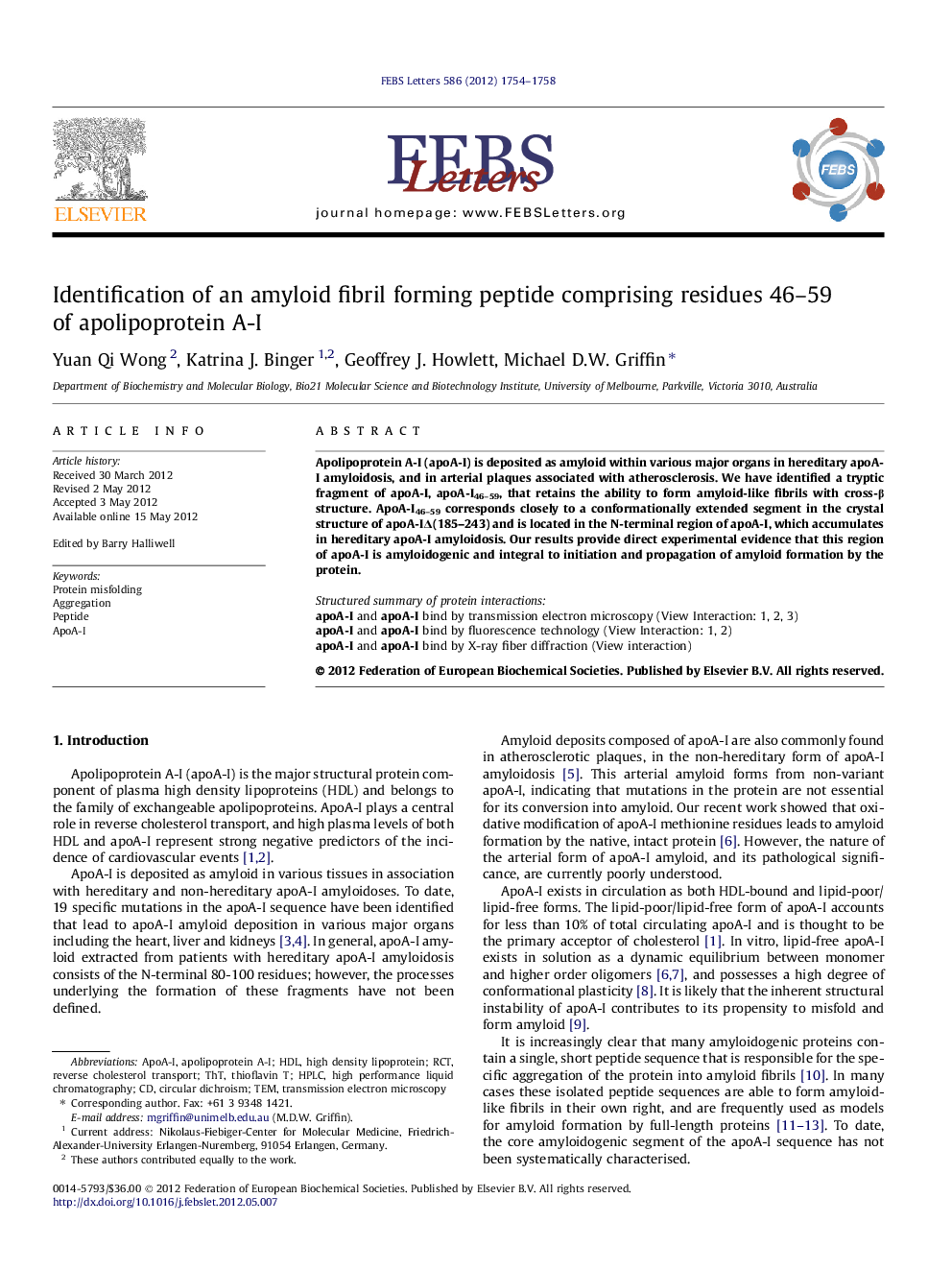| Article ID | Journal | Published Year | Pages | File Type |
|---|---|---|---|---|
| 2048220 | FEBS Letters | 2012 | 5 Pages |
Apolipoprotein A-I (apoA-I) is deposited as amyloid within various major organs in hereditary apoA-I amyloidosis, and in arterial plaques associated with atherosclerosis. We have identified a tryptic fragment of apoA-I, apoA-I46–59, that retains the ability to form amyloid-like fibrils with cross-β structure. ApoA-I46–59 corresponds closely to a conformationally extended segment in the crystal structure of apoA-IΔ(185–243) and is located in the N-terminal region of apoA-I, which accumulates in hereditary apoA-I amyloidosis. Our results provide direct experimental evidence that this region of apoA-I is amyloidogenic and integral to initiation and propagation of amyloid formation by the protein.Structured summary of protein interactionsapoA-I and apoA-Ibind by transmission electron microscopy (View Interaction: 1, 2, 3)apoA-I and apoA-Ibind by fluorescence technology (View Interaction: 1, 2)apoA-I and apoA-Ibind by X-ray fiber diffraction (View interaction)
► Small fragments of apoA-I were examined to identify the core amyloidogenic region. ► A tryptic fragment comprising residues 46–59 of apoA-I aggregated to form fibrils. ► ApoA-I46–59 fibrils bind thioflavin T and contain amyloid cross-β structure. ► Truncation of apoA-I46–59 reduced the ability of the peptide to form amyloid. ► This segment is likely to be responsible for the conversion of apoA-I into amyloid.
